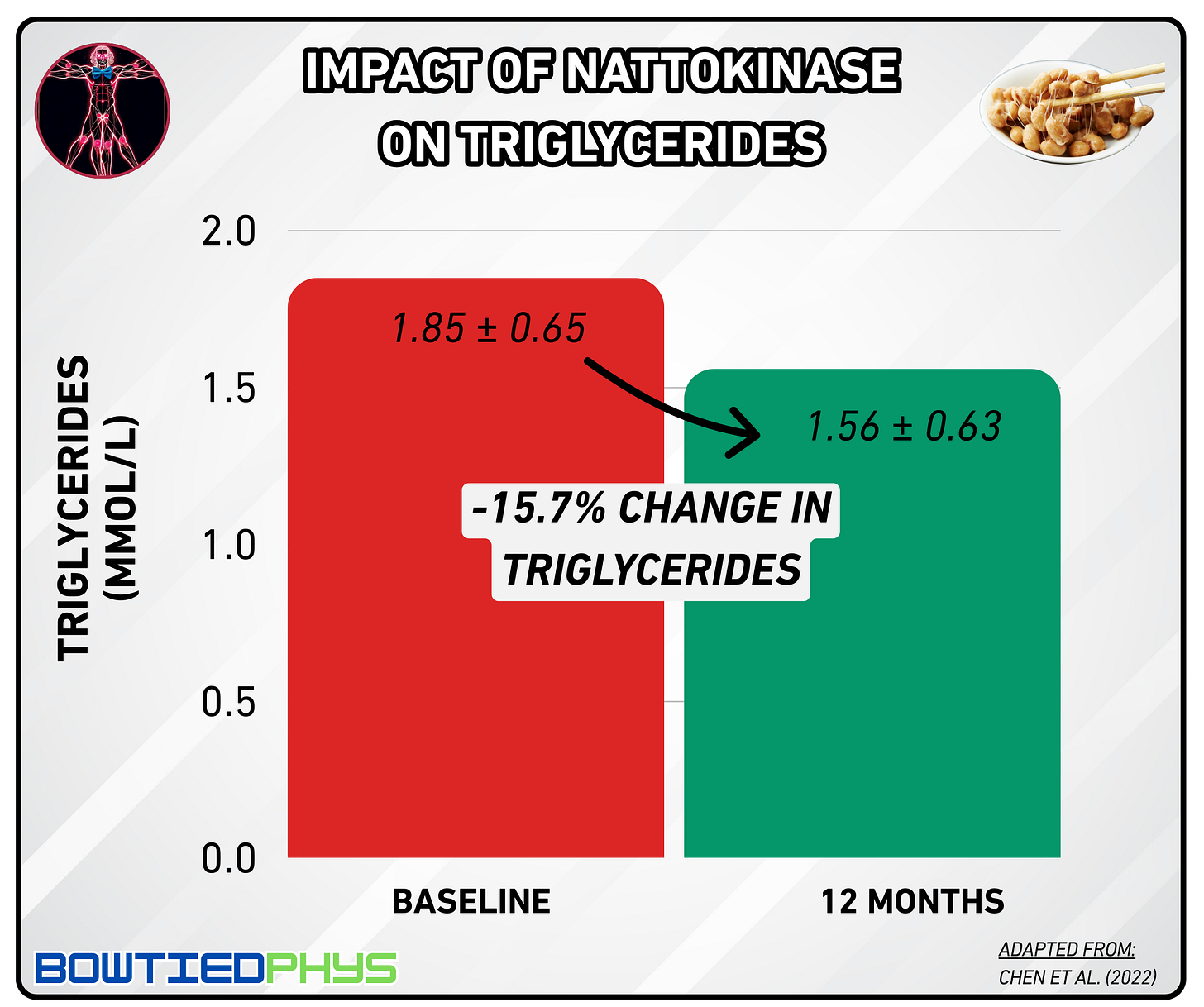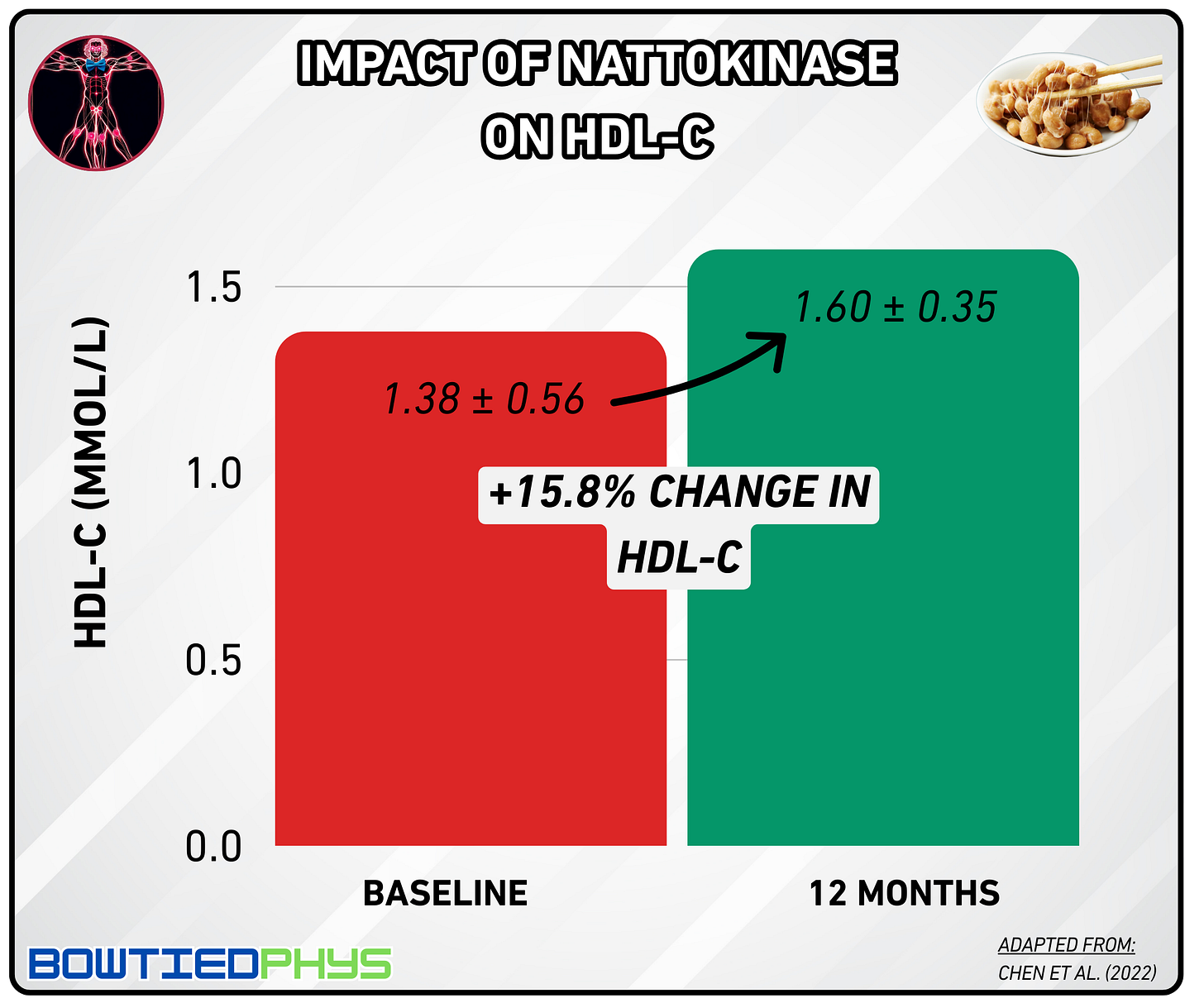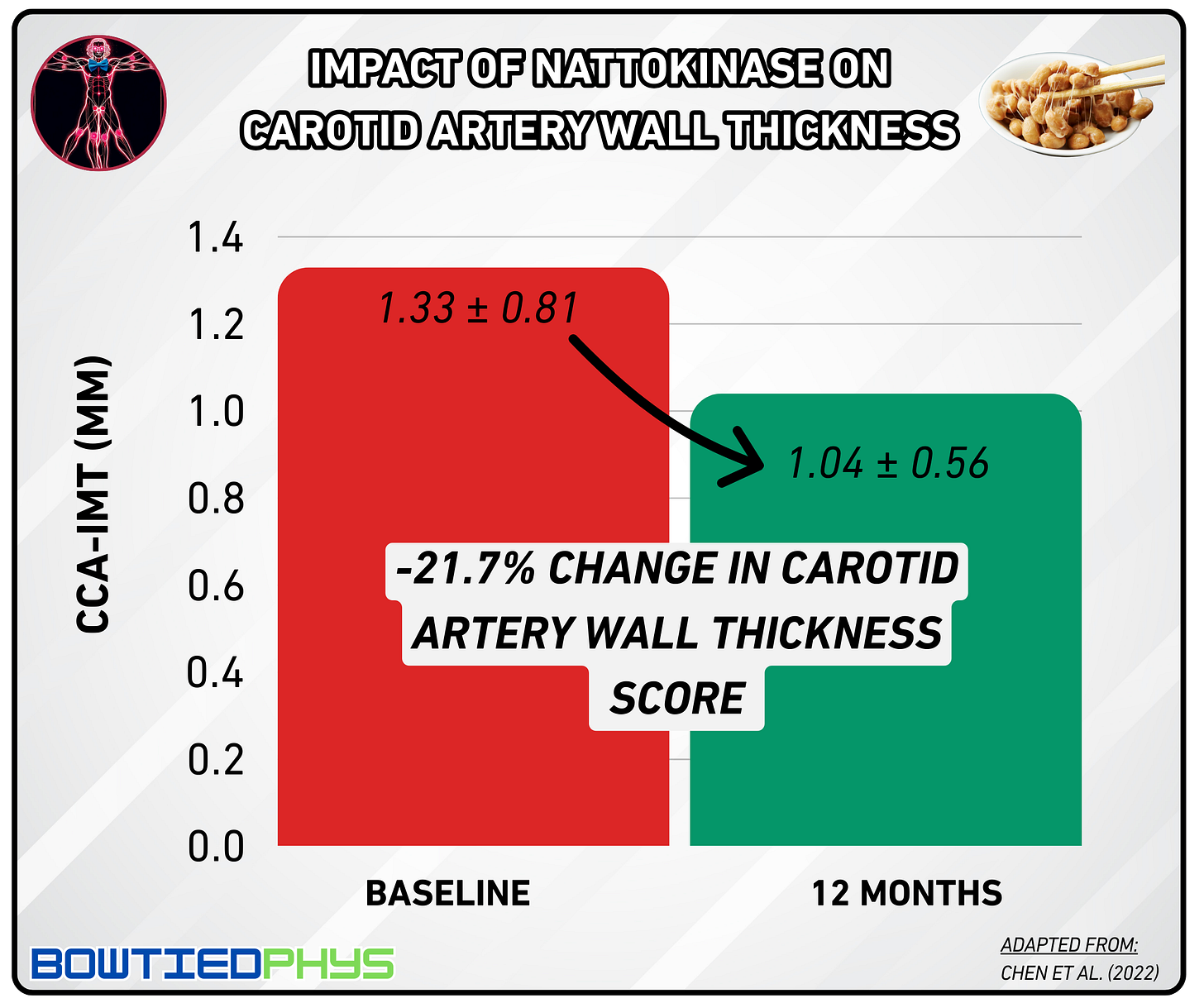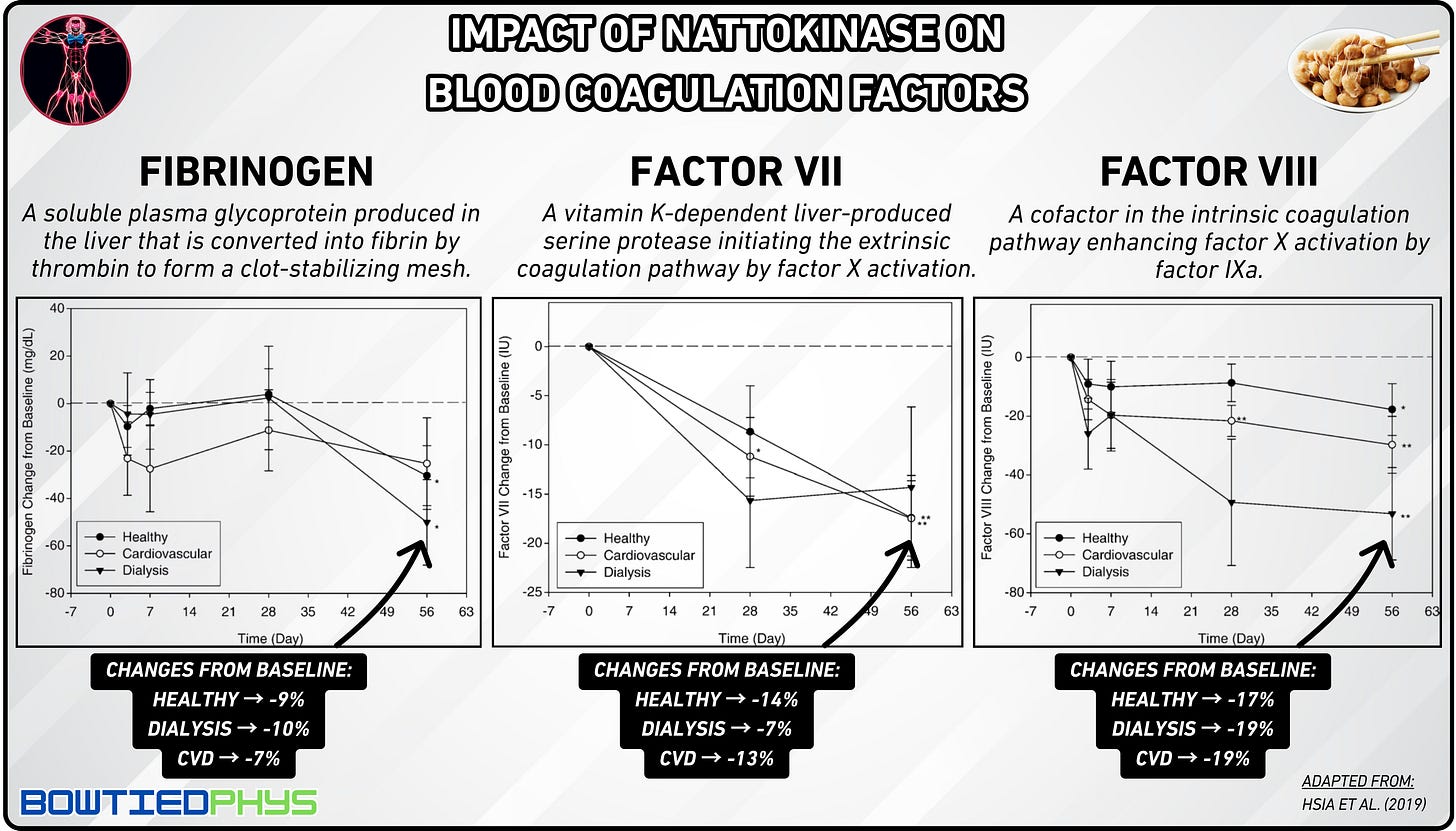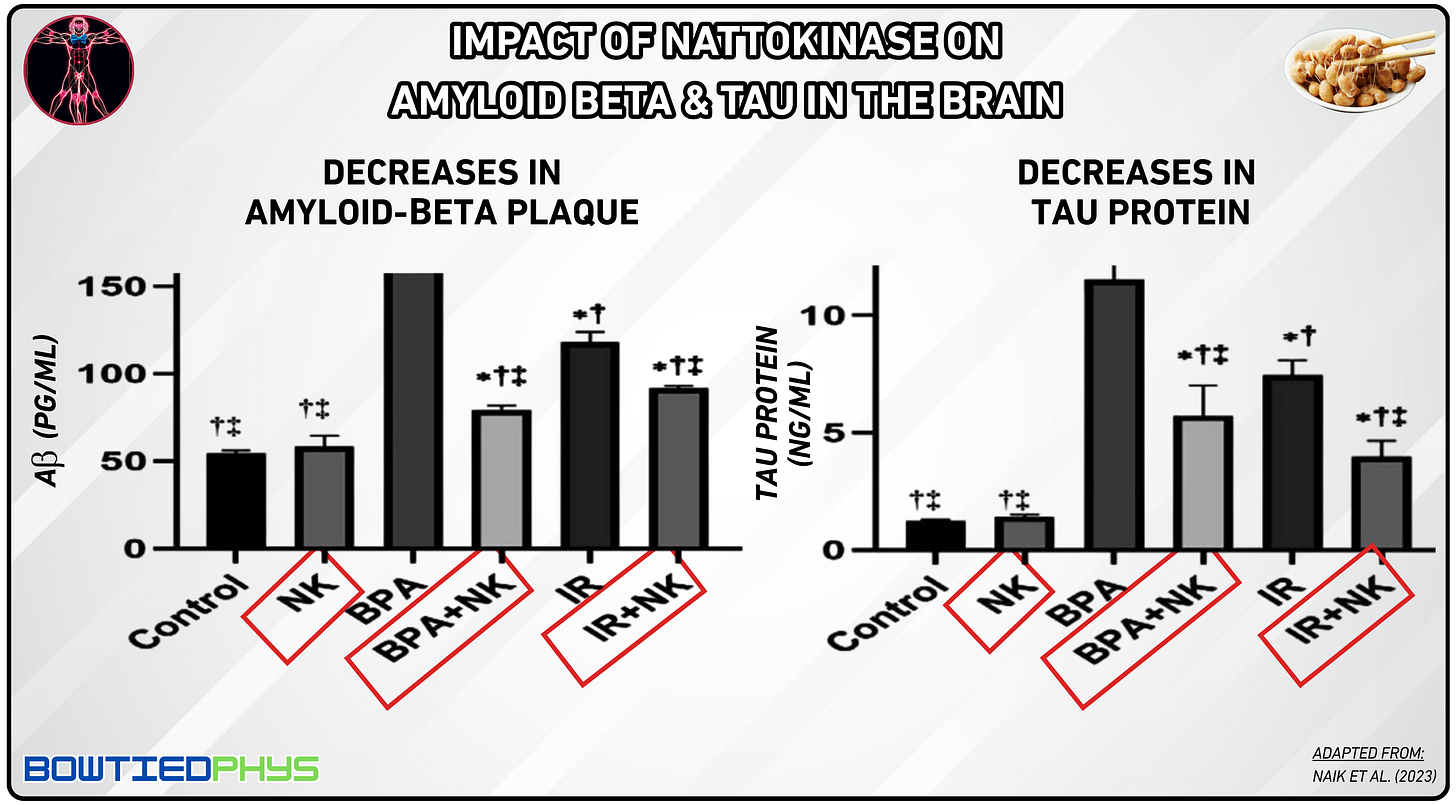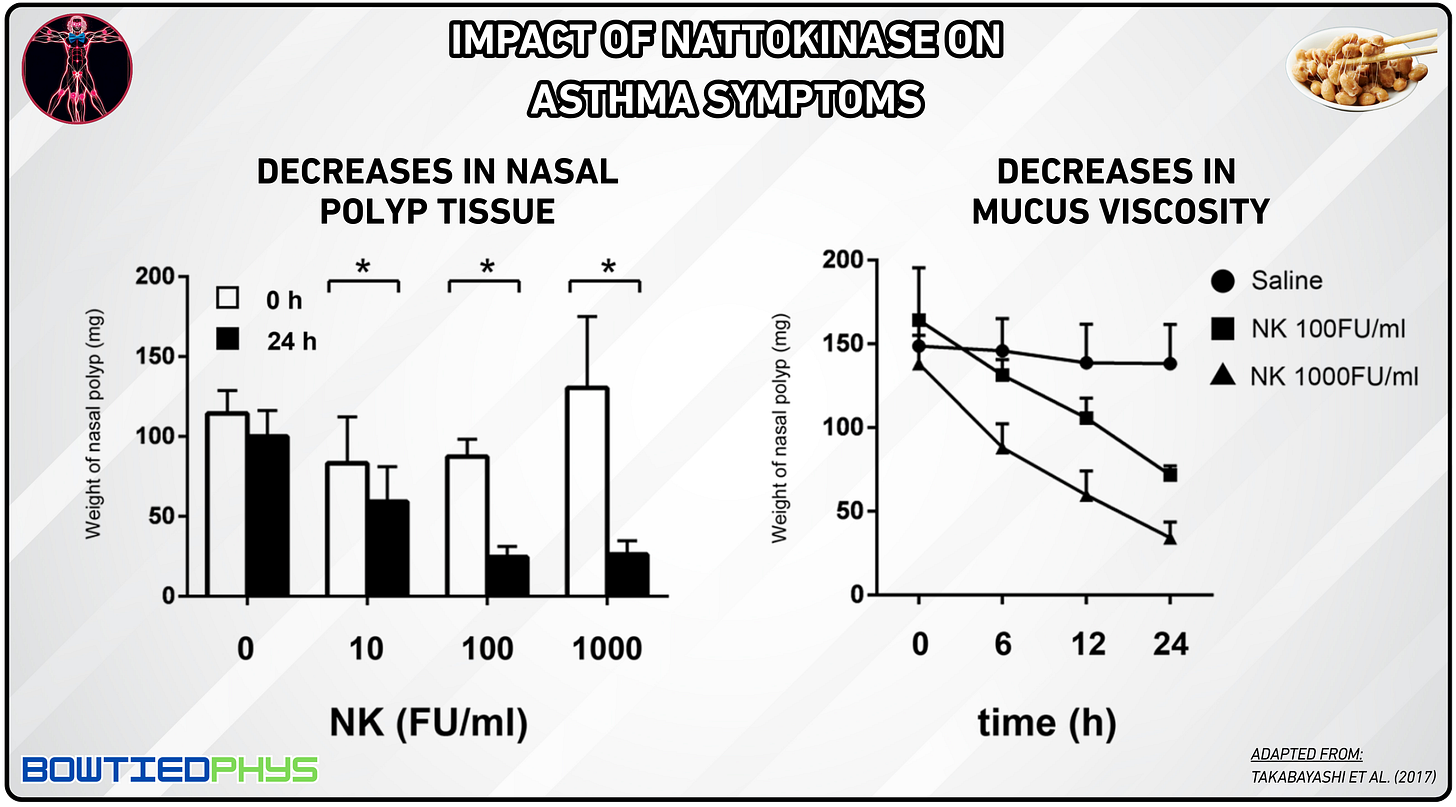How This Japanese Protease Enzyme Is Reshaping Cardiovascular Health
Complete guide to dosing, benefits, & the top brands ranked (and ones to avoid)
“Do you feel alright?”
The reaction from the PA at my most recent physical as she read my 104/72 blood pressure. Like many in our community who’ve witnessed firsthand the power of this miracle enzyme, I've been experiencing results that would make any conventional medical professional do a double-take.
A supplement I have a difficult time even calling a supplement its cardiovascular benefits are so profound. Nattokinase is surging in our corner of the health world for good reason.
As always - congrats on being way out in front of mainstream medical practitioners.
What we’re covering this week:
What is Nattokinase?
How It Works
Benefits (as seen through the latest research)
Dosing
Top Brands Ranked
What Is Nattokinase?
Nattokinase is a serine protease enzyme extracted from nattō, a traditional Japanese dish created by fermenting soybeans or chickpeas with the beneficial bacterium Bacillus subtilis1.
For centuries, the Japanese have revered nattō as a key to longevity. Japan currently ranks 2nd in the world in lifespan2 & recently hit the mark of 100k people over the age of 1003…causation? I’ll leave that up to you to decide.
Nattokinase’s story originated in 1987 when Dr. Hiroyuki Sumi, a researcher at Chicago University Medical School, made a groundbreaking discovery when he identified nattō's remarkable fibrinolytic activity & isolated the enzyme responsible.
Dr. Sumi's breakthrough launched extensive research into nattokinase's health benefits - especially for cardiovascular wellness. Today, we're only starting to see the robust benefits of concentrated nattokinase extracts.
Mechanism of Action
Nattokinase's therapeutic potential4 lies in its strong fibrinolytic activity - indicating its capacity to break down fibrin, the protein scaffold that forms blood clots. As we age, blood thickens & clots more readily raising risks of high blood pressure, cardiovascular disease, & poor nutrient delivery.
Unlike standard blood thinners like warfarin or aspirin, nattokinase possesses a unique dual mechanism: it prevents new clots & dissolves existing ones, addressing both phases of clotting for better flow and heart health.
But how does this elevated level of fibrinolytic activity actually happen?
Let’s walk through the mechanisms sequentially:
Direct Fibrin Breakdown: As a proteolytic enzyme, nattokinase cleaves specific peptide bonds in fibrin—the backbone of blood clots—disassembling the clot’s structure.
PAI-1 Neutralization: Nattokinase inhibits PAI-1, the key blocker of tissue plasminogen activator (tPA). This boosts tPA’s ability to convert plasminogen into plasmin, the enzyme that degrades fibrin, enhancing clot breakdown.
Amplified tPA Activity: Beyond neutralizing PAI-1, nattokinase directly enhances tPA’s efficiency, creating a synergistic increase in plasmin production for faster fibrin dissolution.
Pro-urokinase Activation: Nattokinase activates pro-urokinase into urokinase, another pathway that ramps up plasminogen-to-plasmin conversion, further boosting the body’s clot-busting power.

Through its multi-pronged fibrinolytic action, nattokinase delivers five key properties:
Anti-atherosclerotic: Reduces arterial plaque buildup.
Antihypertensive: Lowers blood pressure.
Antiplatelet: Inhibits excessive platelet aggregation.
Antithrombotic: Prevents and dissolves blood clots.
Neuroprotective: Supports brain health via improved circulation.
Beyond these, nattokinase is showing promise as an antioxidant, anti-inflammatory & anticancer agent. However, much of the heavy lifting we see in terms of the health outcomes come via its strong tendency to break down fibrin & support healthy blood flow.
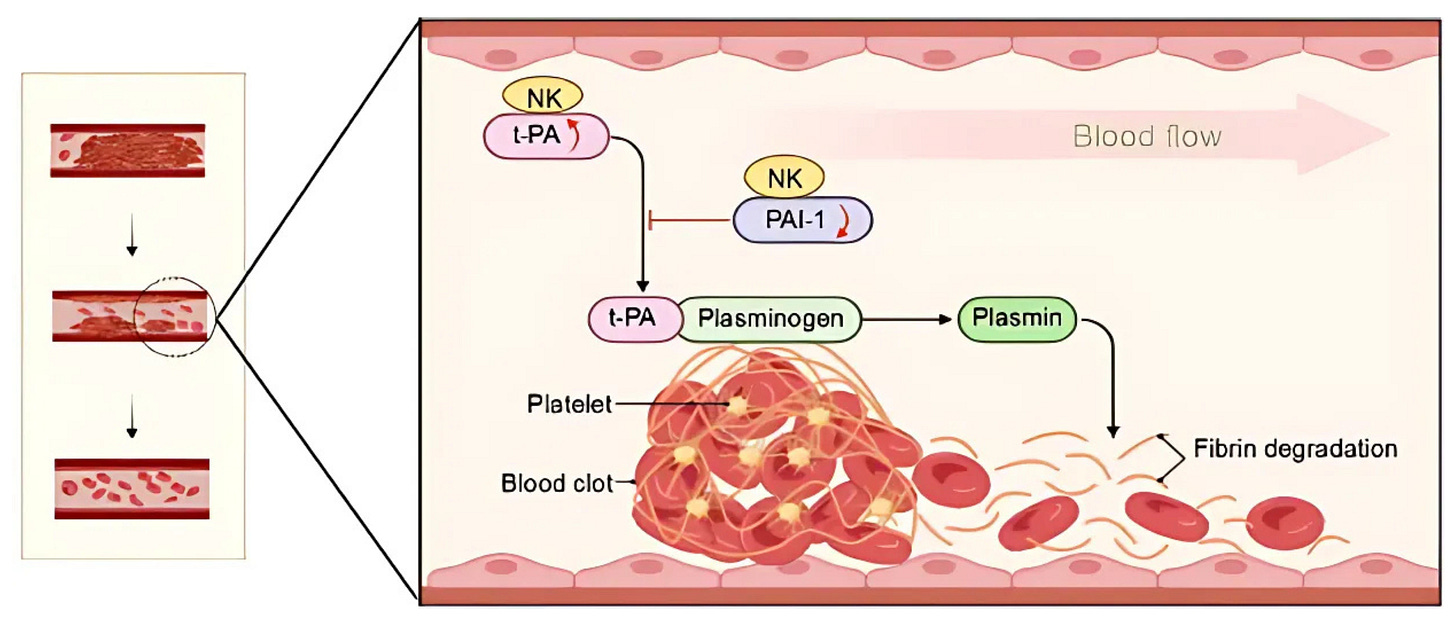
Health Benefits
Alright, enough of the nerdy mechanism talk. Let’s talk about what outcomes nattokinase is actually capable of providing you.
Human Trials
Cardioprotective
The strongest proof of nattokinase’s cardiovascular benefits comes from a landmark study by Chen et al. (2022)5 → the largest clinical trial conducted to date with 1,062 participants. This robust investigation examined nattokinase's effects on atherosclerosis and dyslipidemia over an extended timeframe.
After 12 months of 10,800 fibrinolytic units (FU) of nattokinase taken daily, subjects had significant improvements across multiple lipid biomarkers:
Triglycerides → 15.7% decrease
LDL-C → 18.1% decrease
HDL-C → 15.8% increase
Total Cholesterol → 15.9% decrease
Nattokinase consumption at the 10,800 FU daily dosage also suppressed atherosclerotic conditions:
Carotid plaque → 36.0% decrease
Carotid artery wall thickness (CCA-IMT) → 21.7% decrease
My go-to nattokinase source & one of my favorite launches this year: Toku Flow
✔️ Potent, clinically backed dose: 10,800 FU (> 100% potency)
✔️ Soy-free purity: Crafted via chickpea fermentation
✔️ Synergistic formula: Paired with Vitamin K2 (MK-7) & organic oat bran for better absorption
And the best part?
Every evening, I stir a packet of Toku Flow’s chocolate flavor into hot water for a zero-sugar hot chocolate. As delicious as it is metabolically functional. And the perfect, guilt-free nighttime treat.
My friends over at Toku love the BTP content & audience here so they’ve hooked us up with an exclusive offer. Just use the link below to unlock 20% off.
LDL Reduction
In this randomized controlled trial by Liu et al. (2023)6, 113 participants were split into nattokinase and placebo groups for 120 days. Those on nattokinase saw LDL-C levels drop by 15.2% at 45 days & 11% at 120 days.
Vascular Disease Treatment
In a study by Gallelli et al. (2021)7, 153 patients with vascular conditions received 2,000 FU daily of nattokinase across three groups:
Group 1: Deep vein thrombosis (nattokinase + fondaparinux).
Group 2: Phlebitis (nattokinase + enoxaparin).
Group 3: Post-surgical venous insufficiency (nattokinase alone).
All groups showed significant improvement in vascular symptoms.
Blood Clot Prevention
In a randomized, placebo-controlled trial by Yoo et al. (2019)8, 100 participants were split evenly into nattokinase and placebo groups for 8 weeks. The nattokinase group showed significant increases in collagen-epinephrine closure time, prothrombin time, & activated partial thromboplastin time → signaling reduced clotting tendency and enhanced circulation through potent antithrombotic effects.
Specifically, these measurements reflect:
Collagen-epinephrine closure time: Reduced platelet aggregation response
Prothrombin time: Slower clot formation via the extrinsic pathway
Activated partial thromboplastin time: Delayed clotting through the intrinsic pathway
In a study by Hsia et al. (2009)9, 4,000 FU/day of nattokinase for 2 months significantly reduced plasma fibrinogen, factor VII, and factor VIII levels across healthy volunteers, CVD risk patients, and dialysis patients, confirming its potent antithrombotic effects and support for healthier blood flow.
Blood Pressure Improvement
In a study by Kim et al. (2008)10, 86 participants with untreated hypertension received 2,000 FU/day of nattokinase or placebo for 8 weeks. Among the 73 completers, the nattokinase group saw significant reductions:
5.55 mmHg in systolic blood pressure
2.84 mmHg in diastolic blood pressure
1.17 ng/mL/h in plasma renin activity
Animal Models
While not yet matching the rigor of human clinical trials, early research highlights nattokinase’s broader therapeutic promise. Mechanistic and preliminary data suggest benefits in areas like inflammation, oxidative stress, and cancer, paving the way for future human studies to validate these exciting possibilities.
Microplastic Toxicity
In this animal model study, Elbakry et al. (2022)11 nattokinase countered oxidative stress and cellular damage in rats exposed to bisphenol A (BPA) & radiation. It showcased multi-organ protection, improving liver function, reducing systemic oxidative stress & preventing neuronal damage via potent antioxidant mechanisms.
It also reduced harmful amyloid-β (Aβ), tau protein buildup, & neuroinflammation implicit in neurodegenerative diseases.
Alzheimer’s Disease
In a mouse study by Naik et al. (2023)12, β-amyloid injections triggered Alzheimer’s-like symptoms (i.e. depression, anxiety, memory loss) alongside elevated inflammatory markers (IL-6, TNF-α) and reduced neuroprotective factors (IL-10, BDNF). Nattokinase treatment (50–100 mg/kg) reversed these, improving behavior/memory, normalizing inflammation & restoring hippocampal BDNF levels, matching the efficacy of donepezil, a standard Alzheimer’s drug.
Hsu et al. (2009)13 reported similar findings regarding the amyloid-degrading ability of nattokinase suggesting its strong potential to treat amyloid-related diseases.
In Vitro
Asthma
In a study by Takabayashi et al. (2017)14, nasal polyp tissue was treated with nattokinase at concentrations of 10–1,000 FU/ml. NK significantly degraded fibrin in the tissue and reduced the viscosity of nasal discharge and sputum promoting clearer airways by alleviating mucus buildup.
Cavity Prevention
Streptococcus mutans, the main driver of dental caries, forms resilient biofilms and produces mutacins to outcompete other oral bacteria. In a study from Kimijima et al. (2024)15, nattokinase (1 mg/mL) was tested on 46 diverse S. mutans strains from pediatric dental plaque. It significantly suppressed mutacin production across all strains reducing the pathogen’s ability to dominate and form cavities.
Review
COVID-19 Spike Protein Detox
Keep reading with a 7-day free trial
Subscribe to BowTiedPhys to keep reading this post and get 7 days of free access to the full post archives.





